Christmas Lights for Your Home: A Complete Buying Guide
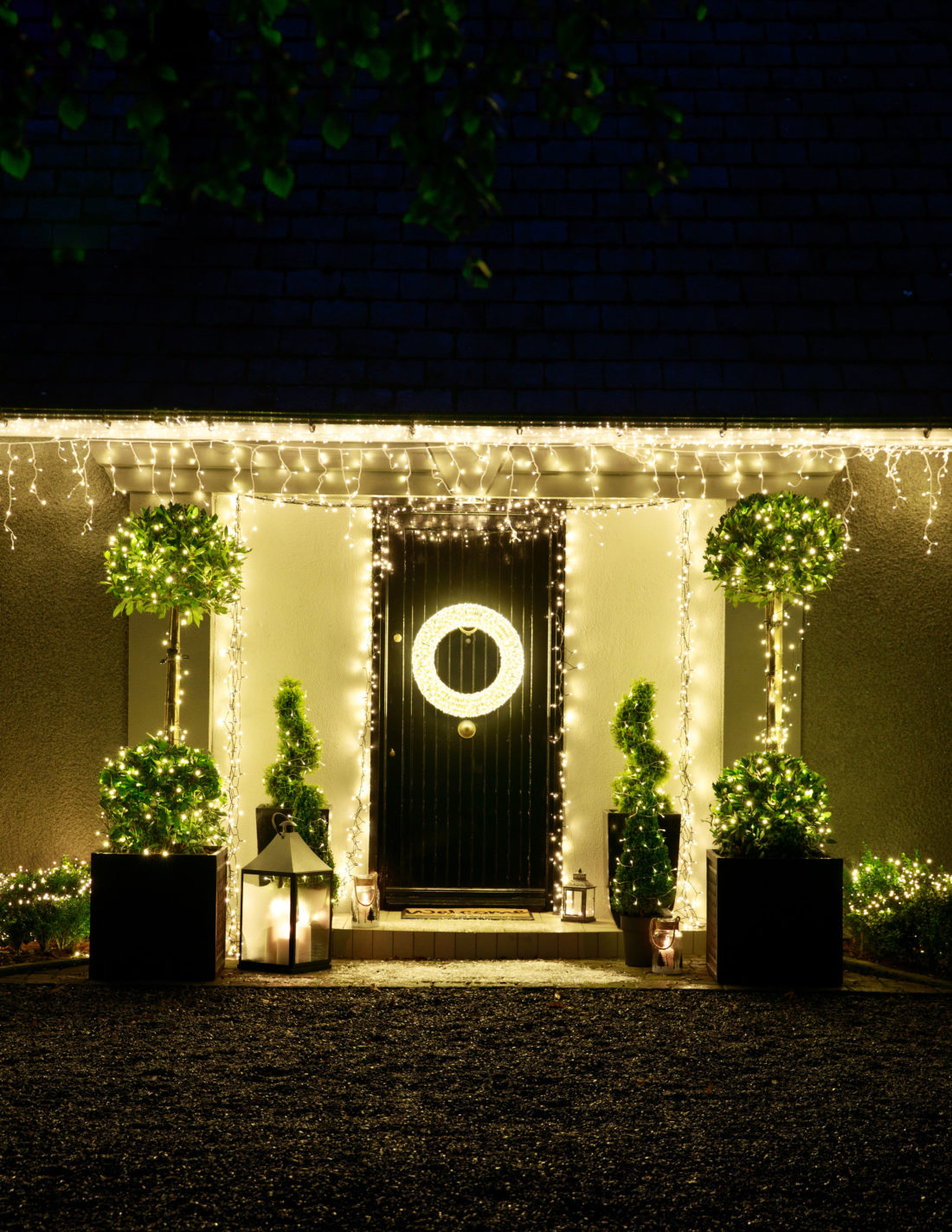
Nothing says “‘tis the season to be jolly” like hanging lights in (and on) your home for Christmas. From the cosy glow of twinkling lights on your Christmas tree to the festive cheer of stringing them up outside your home, Christmas lights are a spectacular way to spread the joys of the season. However, finding the right types of lights might have a little more to it than you may have realised. Not to worry, though! We’ve created a complete buying guide below to help you out this year.
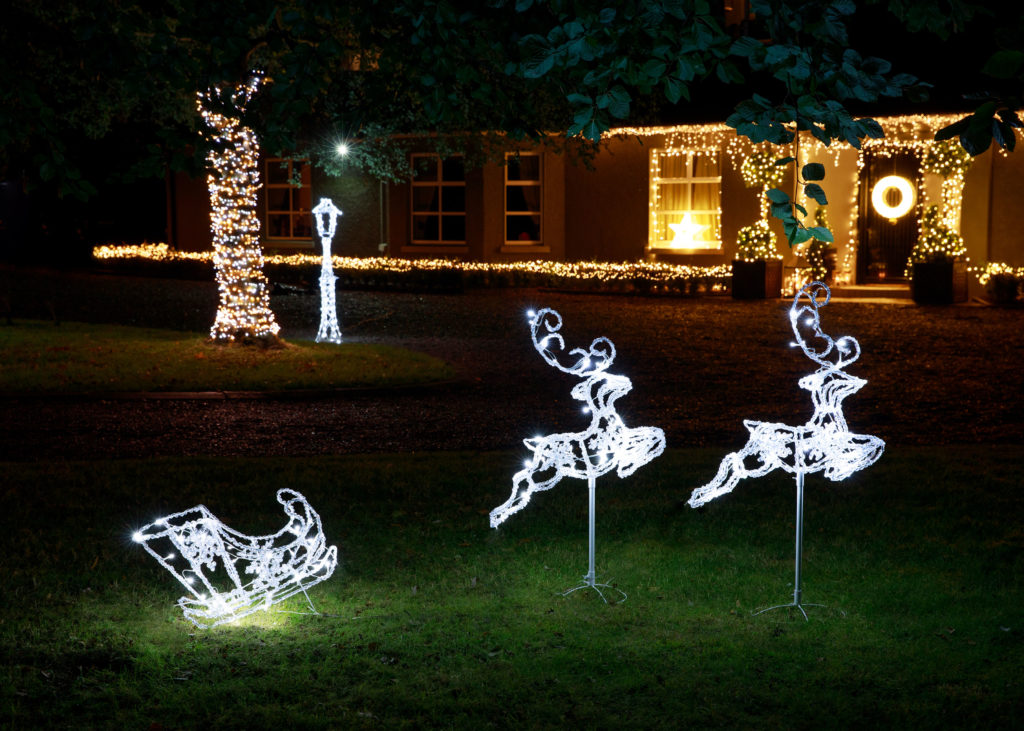
9 Different Types of Christmas Lights
There are many different types of Christmas lights available to you. However, some are better for indoor use, while others are better for outdoors. We’ve separated the different types into two sections: indoor and outdoor.
Indoor Christmas Lights
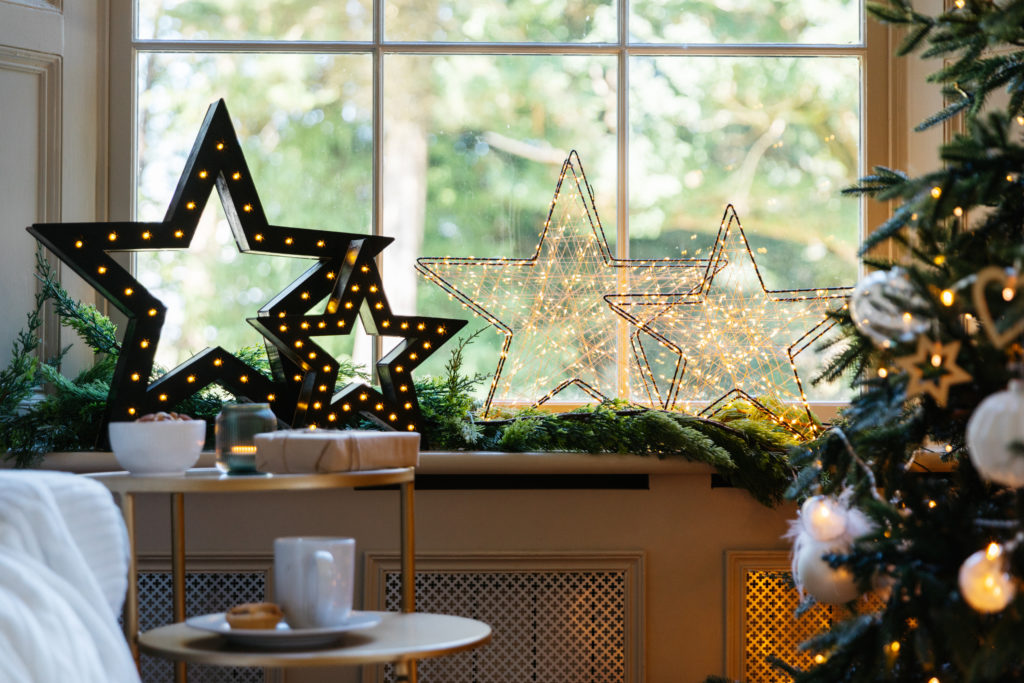
There are usually fewer selections when it comes to indoor lights. That’s simply because we’re working with limited space inside. The 3 popular types of Christmas lights that are best suited for inside use are:
1. String Lights
When you think of Christmas lights, especially Christmas tree lights, these are the kind you’re probably envisioning. These consist of a strand with small lights placed throughout. There are also string lights that can be used outdoors too. When purchasing string lights, make sure you find ones that say they’re great for indoor use. That will make sure they’ve gone through the proper testing, so won't pose a fire risk inside your home.
Due to the flexibility of each strand of lights, they’re the perfect option for both real and artificial trees. They make wrapping the lights around each branch super easy. If you’re curious about how to put lights on a Christmas tree like a professional, be sure to read our complete guide to putting lights on a Christmas tree.
What / When to Use It For:
String lights are often considered the “traditional” Christmas tree lights. Inside, they’re perfect for:
- Christmas trees
- Mantlepieces
- Garlands
- Bannisters
- Wreaths
- Across walls
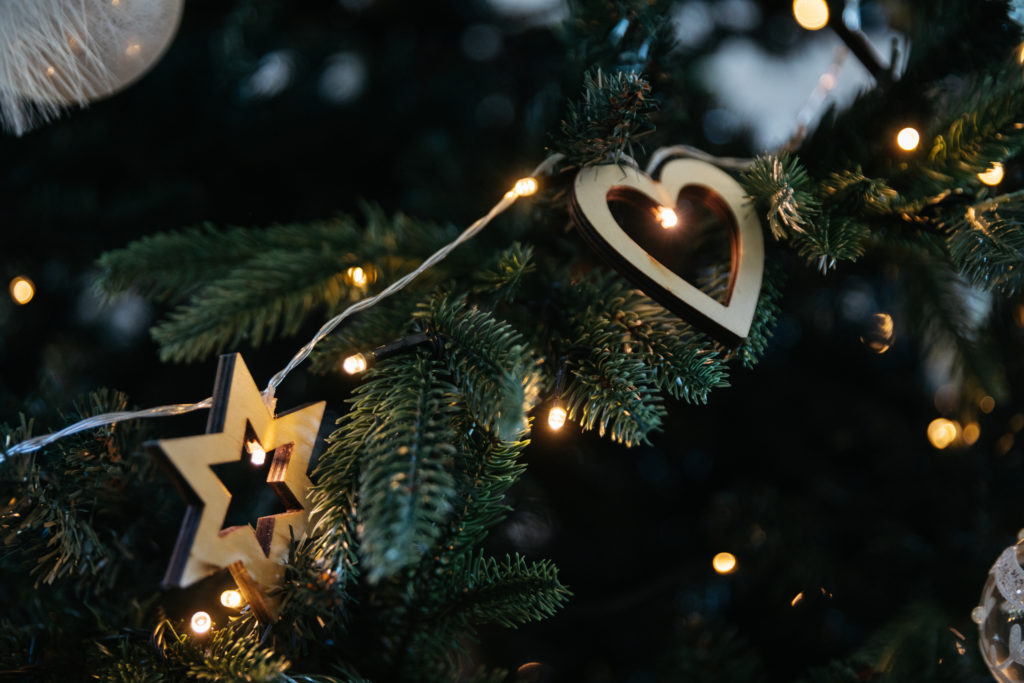
2. Indoor Lighting Ornaments
If you’re looking for unique ways to add more Christmas novelty to your decor this year, then try indoor lighting ornaments. These can either be a part of a strand of lights, or they can be individual ornaments that can be placed around your home. Either way, they'll add another layer of a warm glow inside.
What / When to Use It For:
Indoor lighting ornaments are best placed on:
- Windowsills
- Countertops
- Mantlepieces
- Tabletops
- Shelving
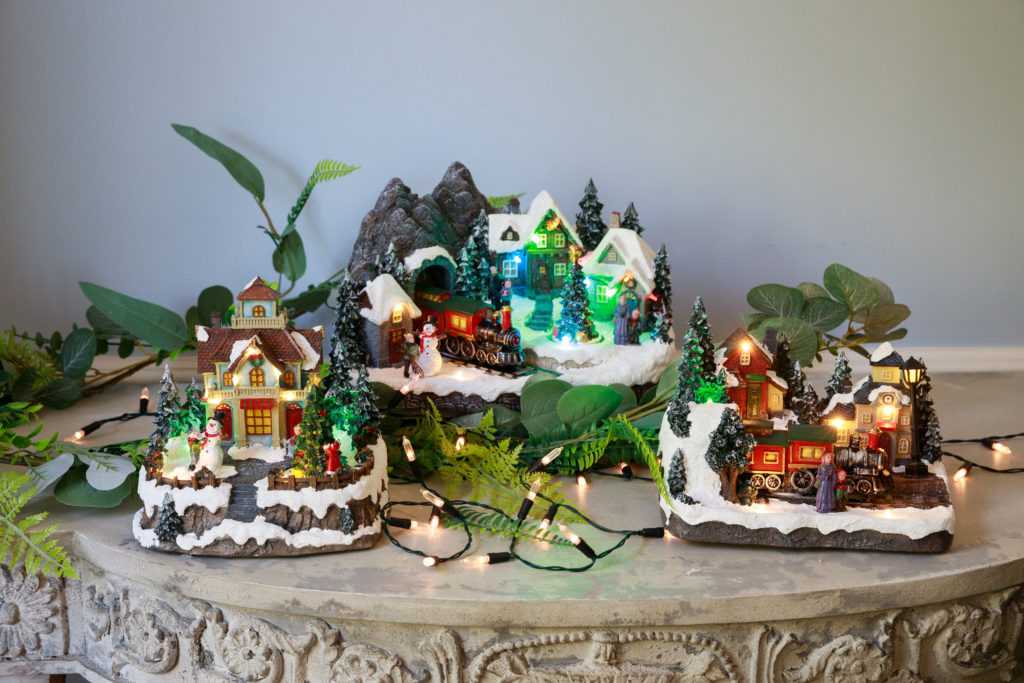
3. Cluster Christmas Lights
Cluster lights are similar to string lights, in that they both consist of a strand with lights placed on it. However, cluster Christmas lights consist of bulbs that are placed randomly throughout the strand. It gives the illusion of nearly four times the number of lights. It also produces a much fuller, brighter look.
What / When to Use It For:
If you like a bright, full look, then these lights are your best bet. You can use them throughout your home in a variety of ways, such as on:
- Christmas trees
- Mantlepieces
- Bannisters
- Garlands
Outdoor Christmas Lights
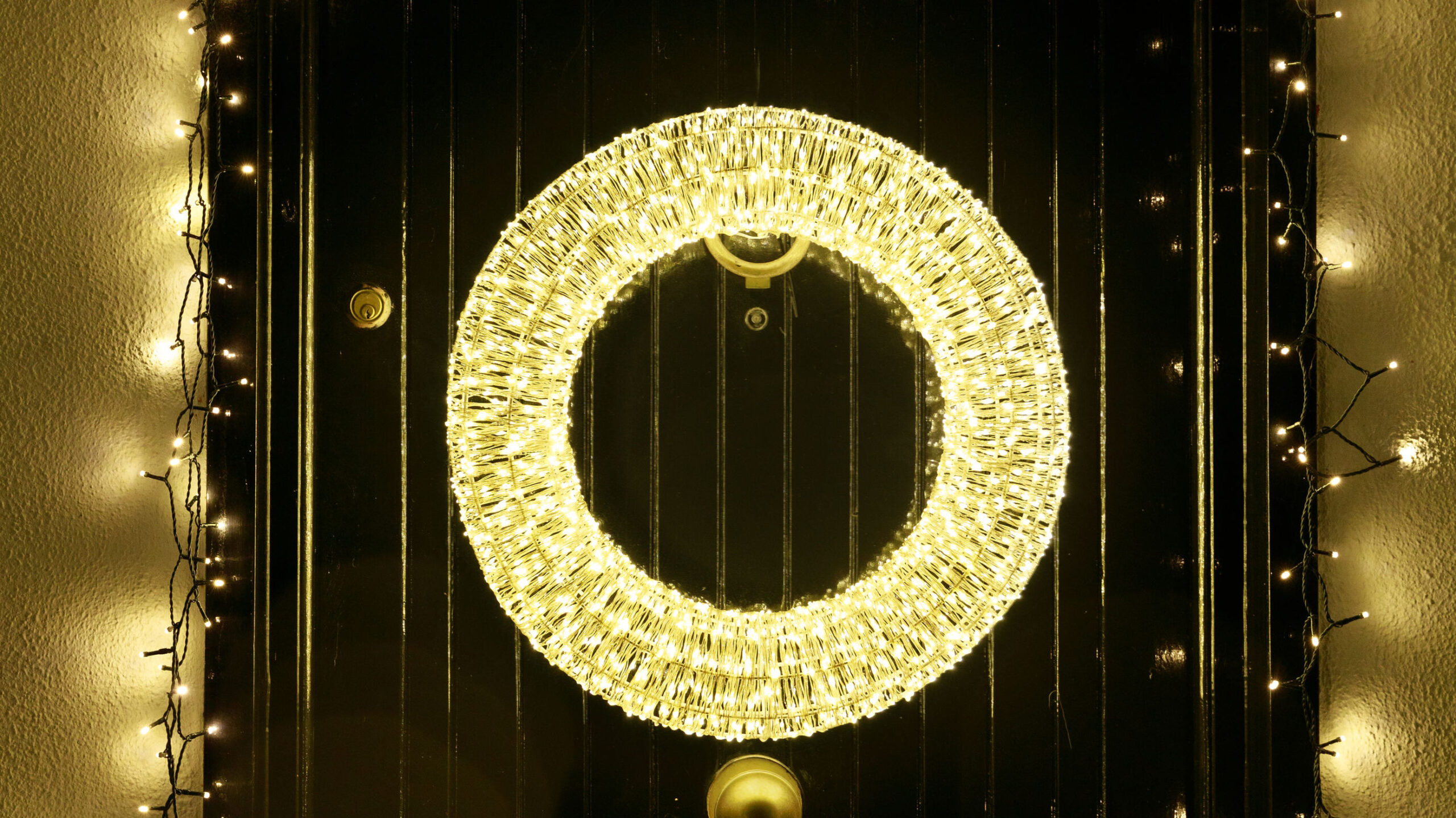
Outdoor Christmas lights are different from indoor ones, despite looking very similar. They are more durable and weatherproof. Make sure to check any boxes of lights you're buying are specifically made for outdoor use when planning to use them on the exterior of your home.
4. Icicle Lights
Another classic like string lights, are icicle lights. When hung and lit up, these lights look like icicles hanging from the edge of your roof. They’re the perfect option if you’re creating a festive, winter wonderland theme.
What / When to Use It For:
Icicle lights are best when strung on the eaves of your house. Since they hang down, you’ll want to give them enough space, so they don’t look like they’re crowding any other structures.
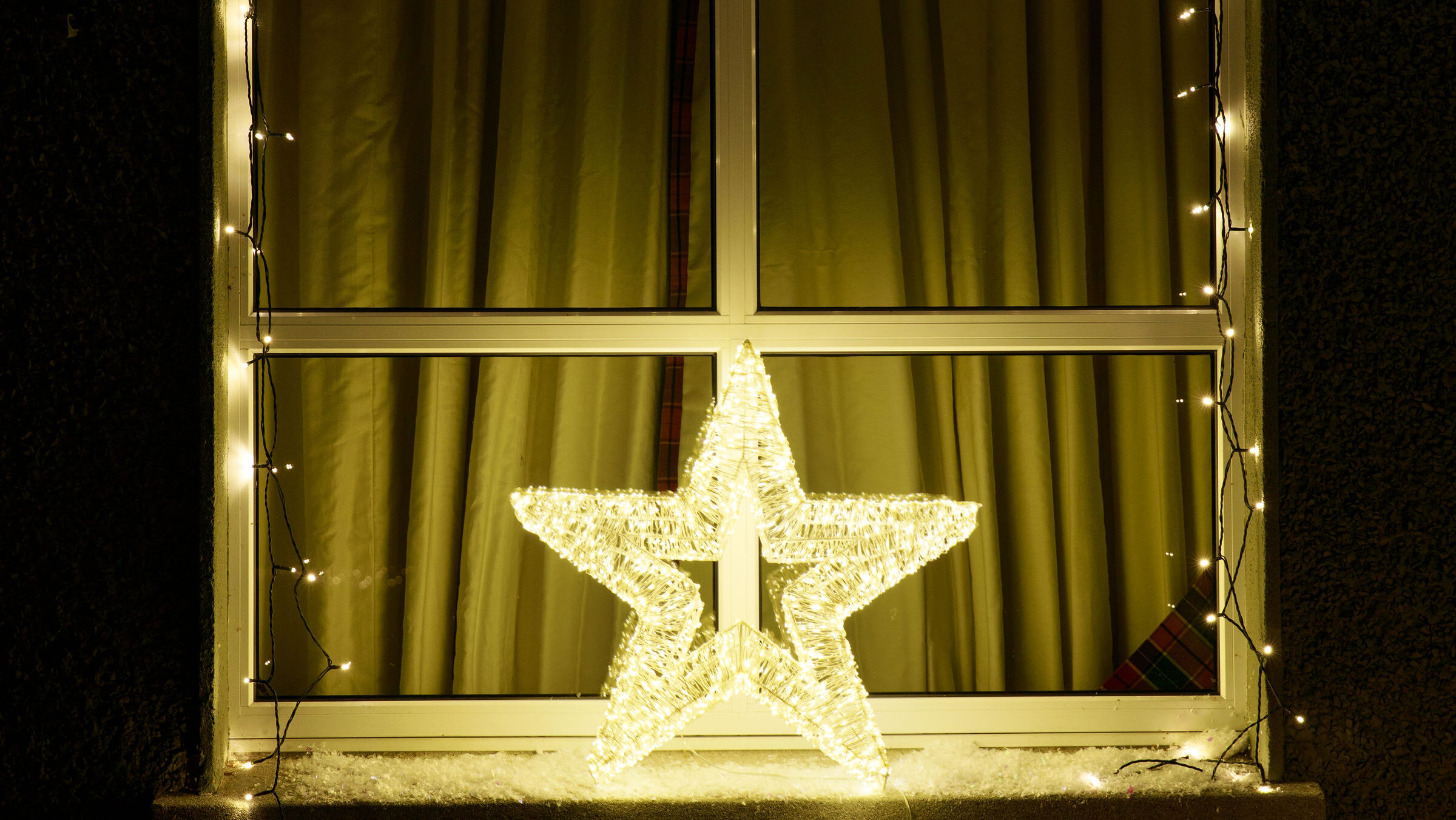
5. Net Christmas Lights
Net lights look like a fishing net strung with small bulbs of Christmas lights. They’re the easiest way to spruce up your outdoor area with Christmas cheer. Plus, once they’re set, they create a uniform, crisp look without you having to wrap each strand around every shrub or bush.
What / When to Use It For:
Net Christmas lights are best used for adding a glow to shrubs and bushes outside of your home.
6. Novelty Shapes
If plain string lights sound dull, and you’re looking for more excitement, then try this unique Christmas lighting option. These novelty lights can come in many different shapes to create festive cheer, such as stars, formed icicles, Christmas trees, and even penguins and polar bears.
What / When to Use It For:
These are best used for places where people can see them clearly. Think of decorating the exterior of your doorway so guests can see the actual shapes as they come in.
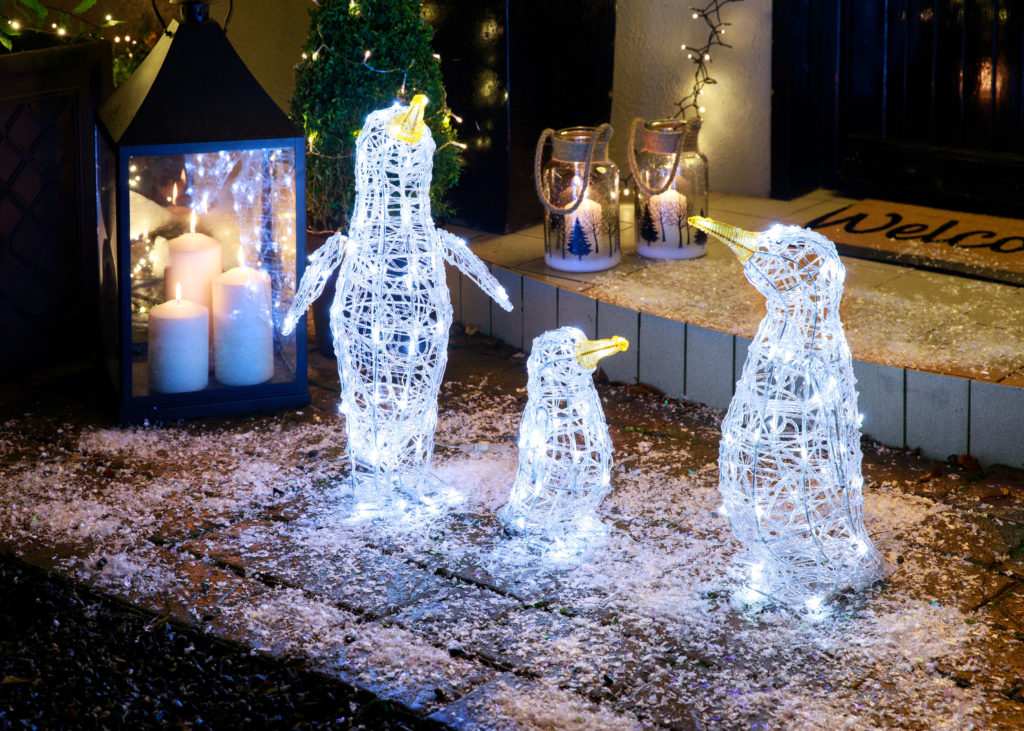
7. Projectors
Projector lights have been increasing in popularity over the last few years. That’s because they make illuminating a house for Christmas so easy. They often come in a variety of patterns and colours so you can choose a setting that you like best. Combining them with some string lights or net lights is a great way to add more dimension to the outside of your home too.
What / When to Use It For:
If you have a two-story house with steep gables (or if you’d rather not get on a ladder), then projectors might be the best option for lights on your home. They’re excellent at providing plenty of Christmas cheer with minimal effort. Simply stake the projector into the ground, point it at the area of the house you want to light up, and turn it on.
8. Pathway Lights
If you have a garden outside or even a pathway leading up to your front door, you might decide to swap out your standard lights for a more festive option at this time of year. These are typically solar Christmas lights, so you won’t need to worry about plugging or unplugging them every night!
What / When to Use It For:
Pathway lights are best used to highlight walkways to and from your home.
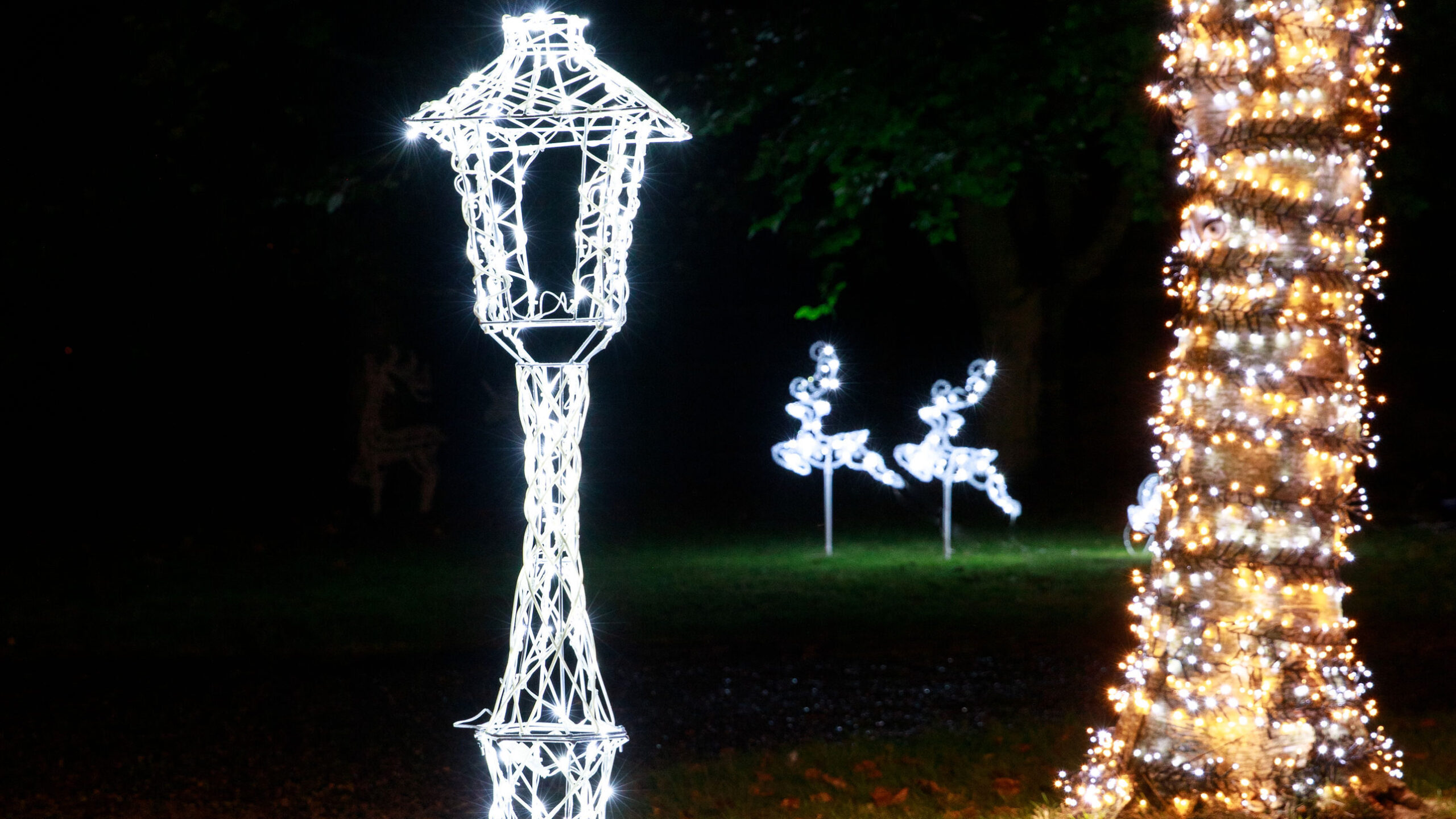
9. Christmas Rope Lights
Finally, we have Christmas rope lights. These usually consist of a strand of LED lights encased in clear plastic so the colours can shine through. They come in a variety of colours, so you’re sure to find something that matches your overall colour scheme.
What / When to Use It For:
These LED rope lights are best used for outlining doorways, windows, cabinets, walls and even crown moulding.
Possible Power Sources for Christmas Lights
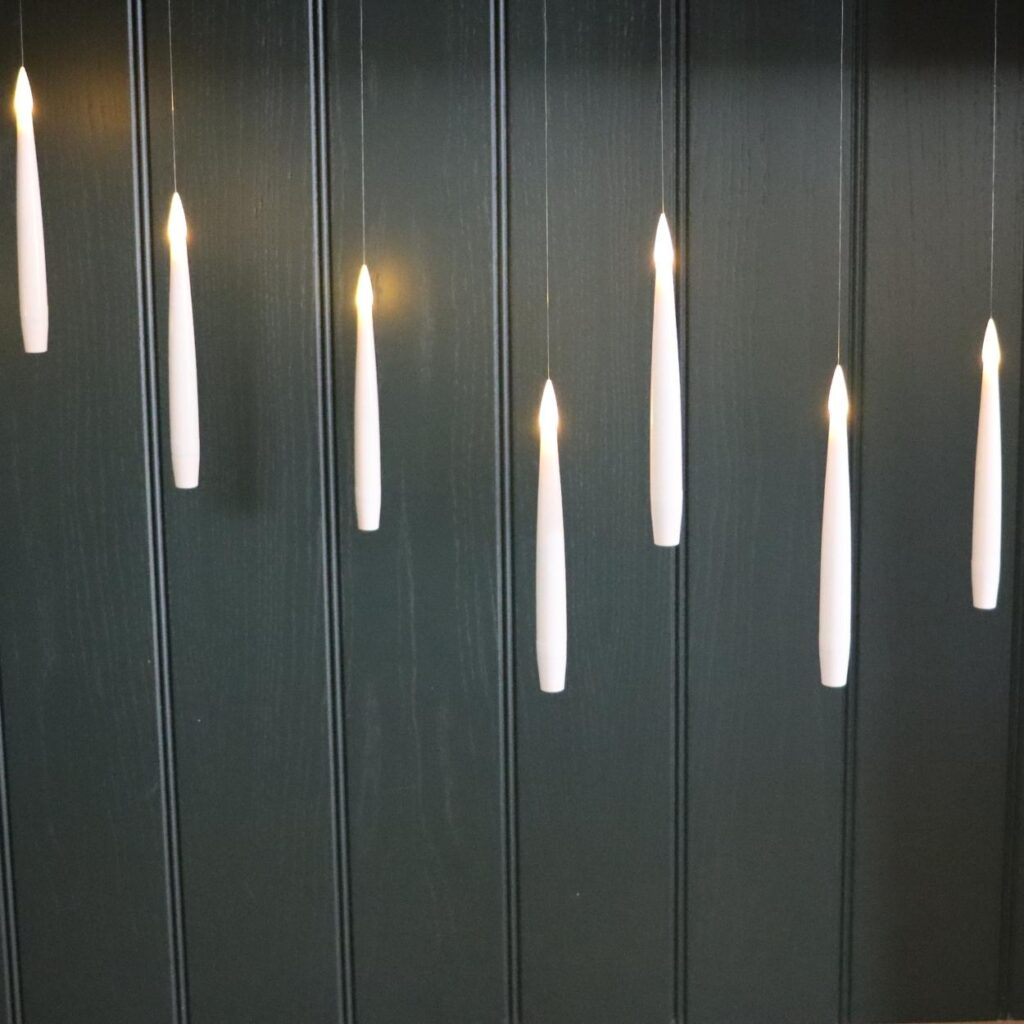
There are many ways Christmas lights can receive their power. It doesn’t all have to come from extension cords. The most common power sources for Christmas lights are:
Plug-In Christmas Lights
The most common type of Christmas lighting, plug-in lights are the best option if you need a reliable source of power. Consider plug-in lights when you have an available electrical outlet nearby or a heavy-duty extension cord. If you’re plugging in your outdoor Christmas lights, make sure you purchase extension cords that are made for outside use. Plug-in lights remove the need for solar charge and even dead batteries. They’re best used when you have a lot of lights.
Battery-Operated Christmas Lights
Battery-powered lights don’t have the reliability or the extended use of plug-in ones. Long term, using battery-operated Christmas lights to light up outside your home won’t work as you’ll have to constantly change the batteries. These types of lights are best used on small decor pieces, such as table-top Christmas trees, small lengths of garlands and wreaths, or when you can connect outdoor lights to a power-source within your home.
Solar Powered Christmas Lights
Finally, we have solar power Christmas lights. Just like the name suggests, these lights build up their energy source from the sun. At night, they use that stored energy to switch on. It’s the eco-friendly option for your outdoor Christmas decor. However, if your home is shaded, you may not receive enough solar energy for them to light up properly. The best time to choose solar Christmas lights is when you have a small area you’re trying to light. Make sure it receives plenty of sunlight throughout the day so the lights can stay bright all night long.
Different Christmas Light Bulb Sizes
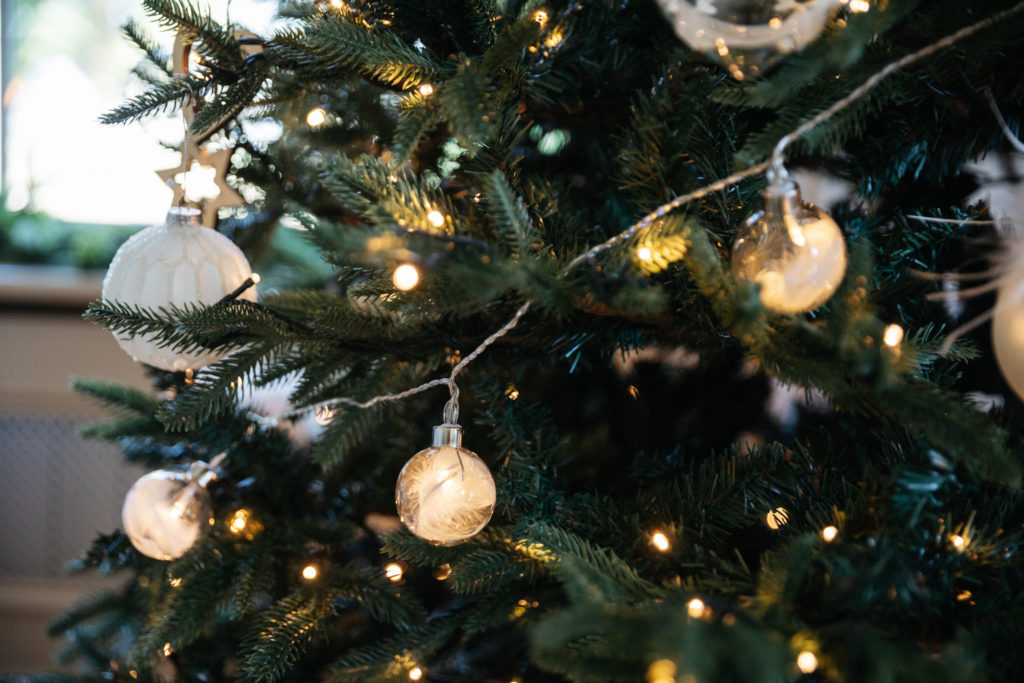
Some types of lights work well for indoor and outdoor use (as long as you get them rated for both). The only thing that needs to change is the size of the lights. These are the most popular sizes of lights available:
Mini
Mini bulbs are probably the most popular light bulb size. These are often found when decorating most Christmas trees. There are two types of mini-LED bulbs: M5 and T5 bulbs. The M5 ones have rounded tips and textured sides. The T5 bulbs have pointier tips.
C6 Bulbs
Resembling a strawberry, these are often thought of when you think of “retro” or “vintage” Christmas lights. They’re the smallest size bulb in the “C” line, which stands for cone size. These are perfect for decorating small, outdoor landscaping elements, such as shrubs or small trees.
C7 Bulbs
C7 Christmas lights are similar to the C6 shapes, but these are a bit larger. They have a rounder bulb and because of their size, they’re great for decorating your larger shrubs and bushes in your garden.
C9 Bulbs
Finally, C9 Christmas lights are much larger than its two counterparts. They’re perfect for lighting up rooflines and the eaves of your home. You can also use these if you have very large shrubs, bushes, or trees in your garden.
Different Christmas Light Bulb Types
Along with the type of light fixture and the different size light bulbs, you also have your choice when it comes to type of bulb. The two most common light bulbs are:
LED
LED Christmas lights have become increasingly popular over the last few years. They’re energy-efficient and last much longer than their incandescent counterparts. This is perfect if you want to maintain your bulbs for longer periods without worrying about them going out – or without driving up your energy bill. LED lights are excellent for both indoor and outdoor use. Just make sure the packaging says it’s rated for whichever option you’re going for.
Incandescent
Incandescent lights are usually the type of lights people think of when they want a warm, cosy glow. They’re not as bright as LED ones, which contributes to the glow they give off. However, they tend to go out much faster as they’re not as hardy as LEDs. Keep in mind (especially, if you have a real Christmas tree) that these bulbs get hot to touch with extended use.
Different Types of Christmas Light Colours
Once you know all of the specifications for your desired Christmas lights, then you can start to choose your colours. The great news is that most types of lights on your home come with plenty of options. These are the most popular types of light colours to choose from:
Warm White
Warm white is the traditional Christmas tree light colour – not to mention the most popular. They’re also the ones that are typically used on a pre-lit tree. They give off a warm glow with cosy yellow undertones.

Cool White
On the other hand, there are cool white lights. These appear white with a cooler, blue undertone. They’re perfect if you’re creating a winter wonderland theme for your home.
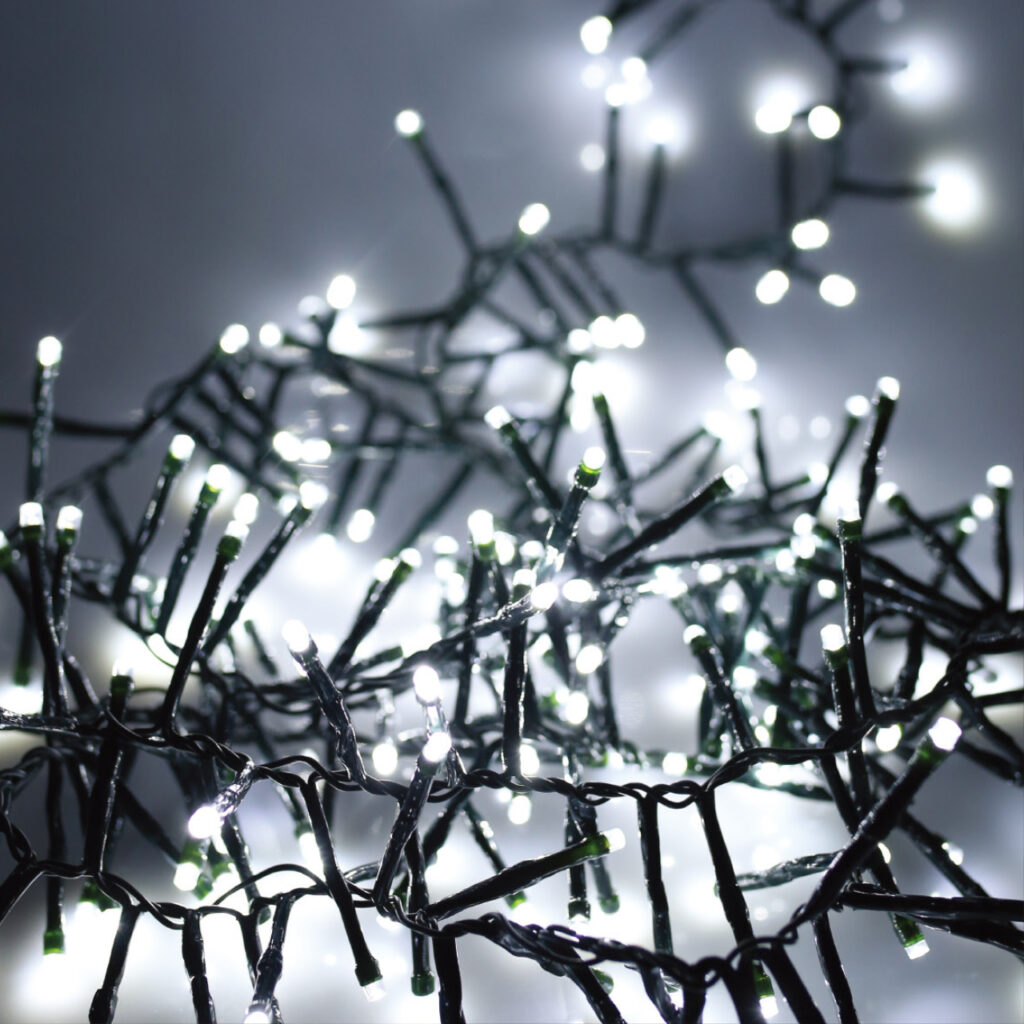
Blue
If you want less white and more of a cool colour, then blue lights are a great option. You can find Christmas lights of all types in this wintry colour.
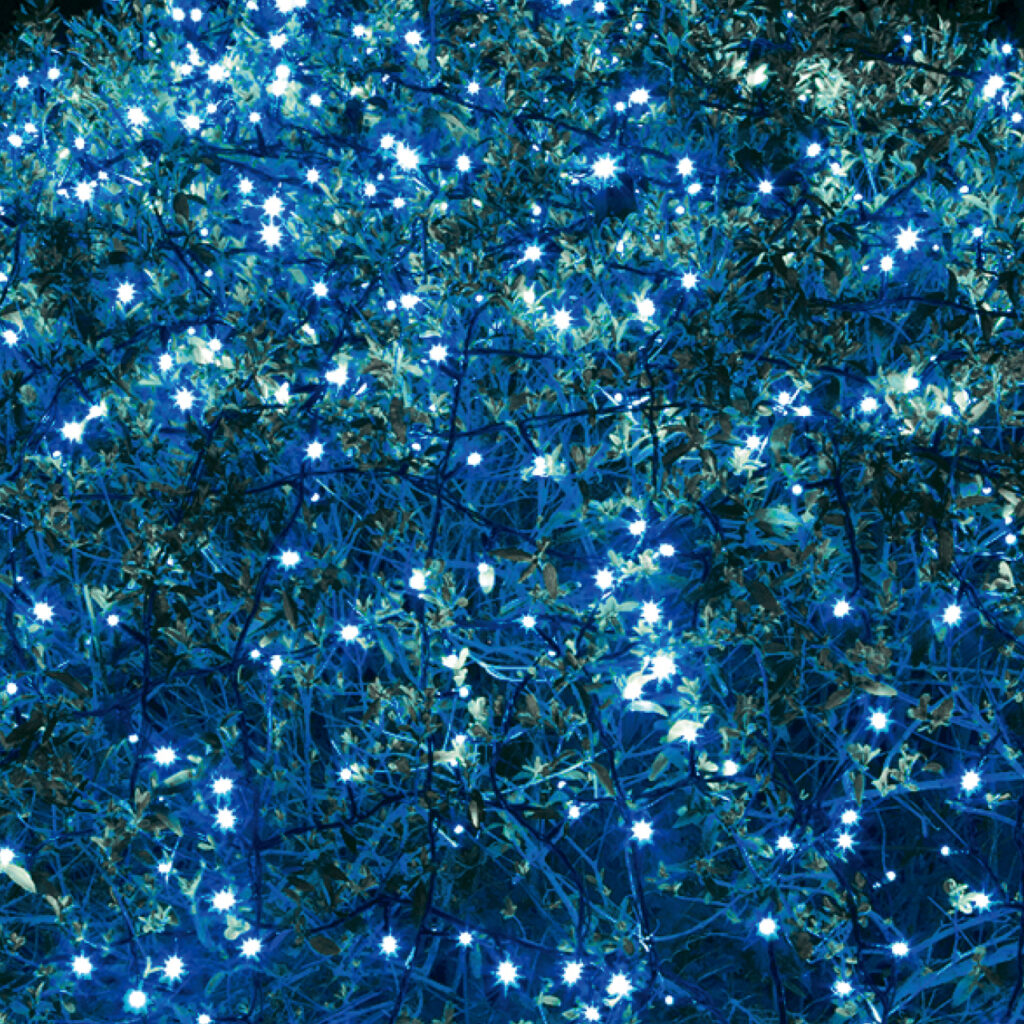
Red
Red lights are another option if you’re looking to add more excitement to your Christmas decor. It’s a warm colour, so will keep that cosy feeling inside your home.
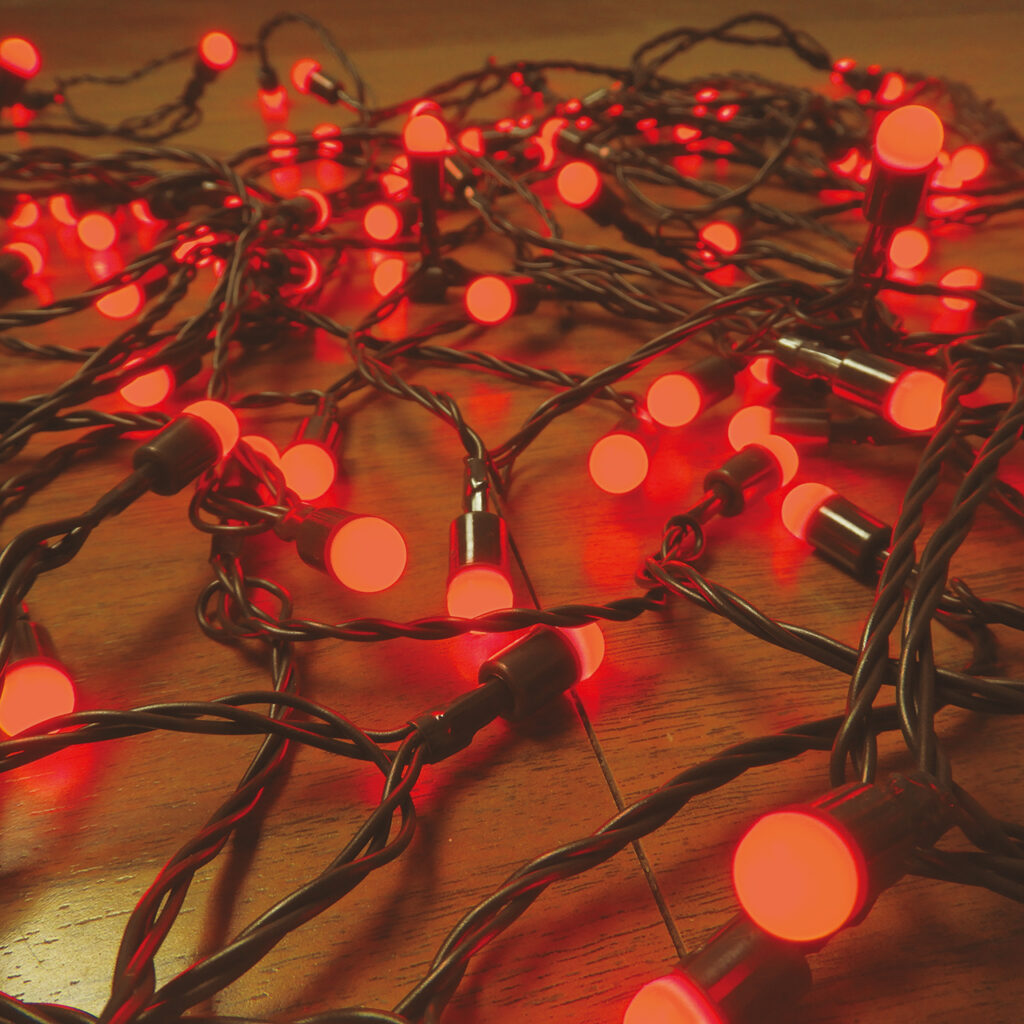
Green
Green is another traditional Christmas colour option for your lighting. If you’re looking to spruce up your home, try mixing both red and green into your Christmas light colour palette.
Multi-Coloured
Finally, we have the multi-coloured lights. They’re perfect for adding plenty of festive cheer to your home, whether you string them up inside or outside.
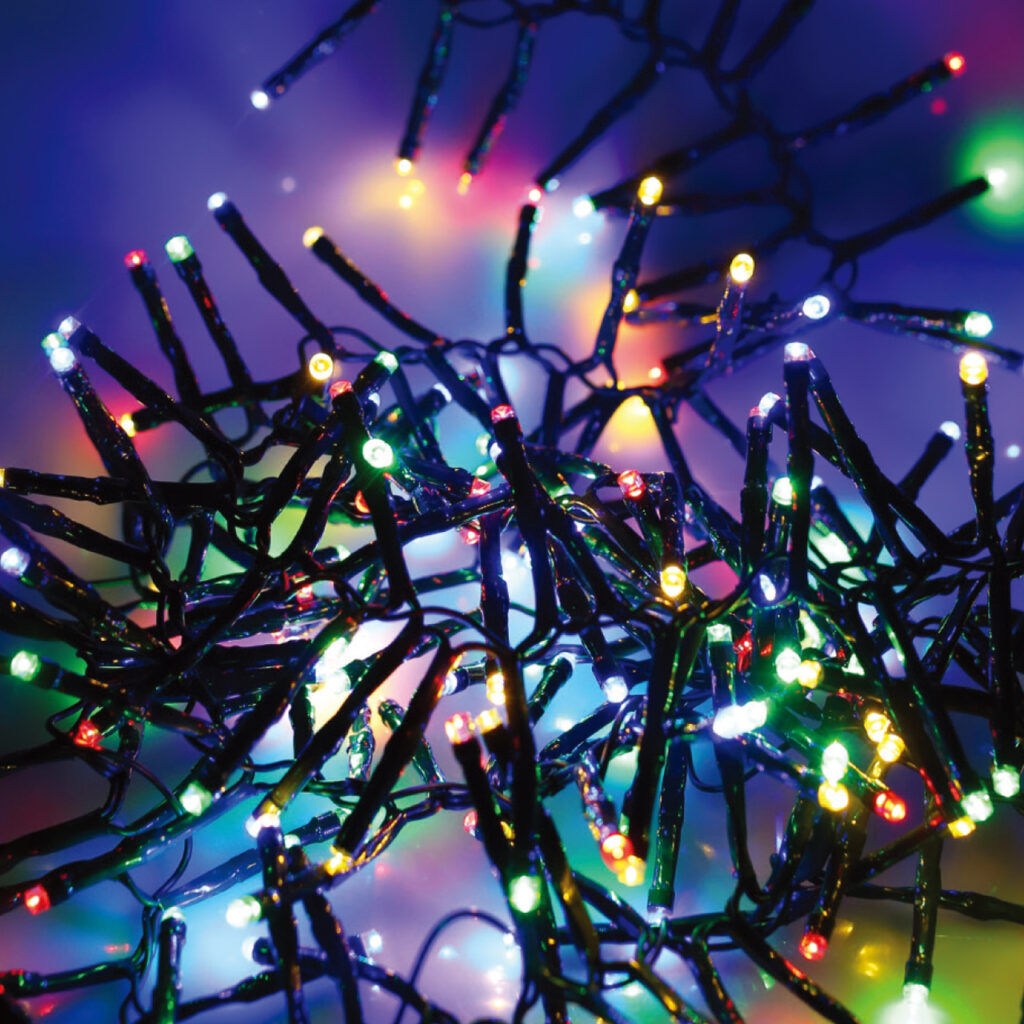
Shop our full range of Christmas Lights in-store or online at Woodies DIY.
Woodie's
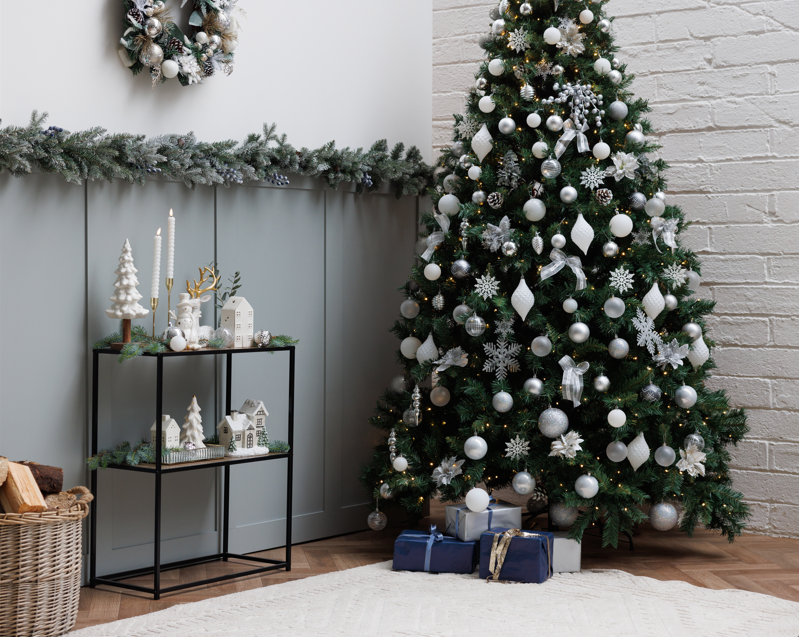
- Christmas
A Complete Guide to Putting Lights on a Christmas Tree
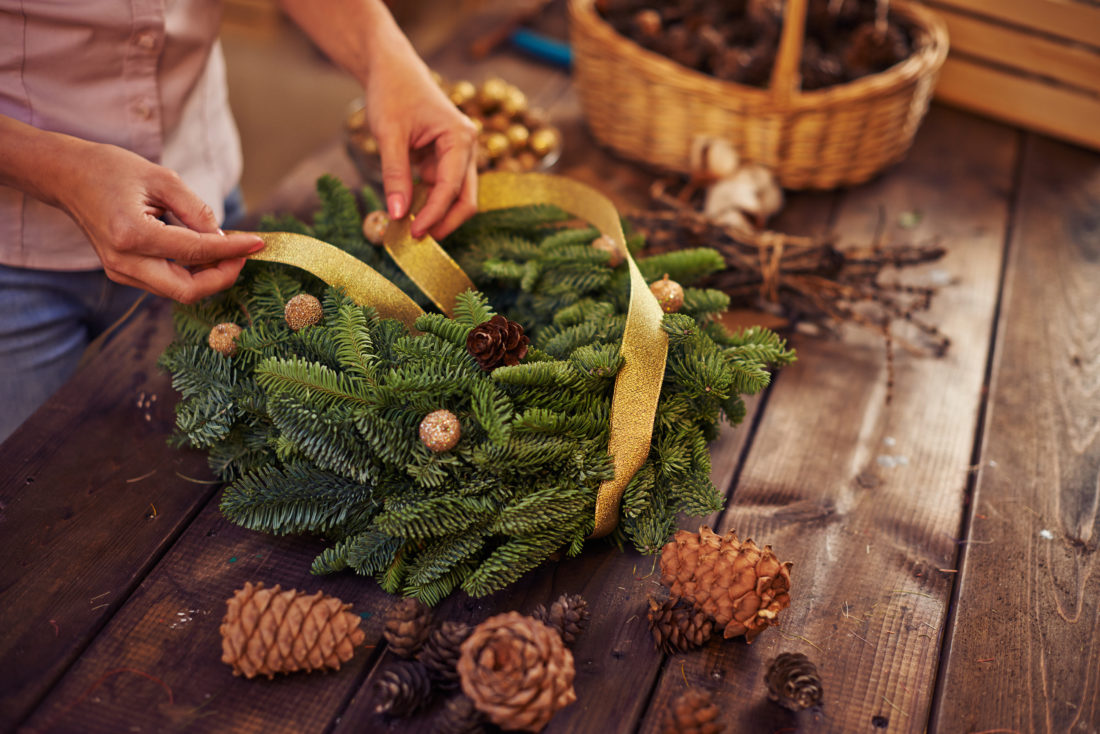
- Christmas
DIY Christmas Decorating Ideas: Your Ultimate Guide to Family Festive Fun
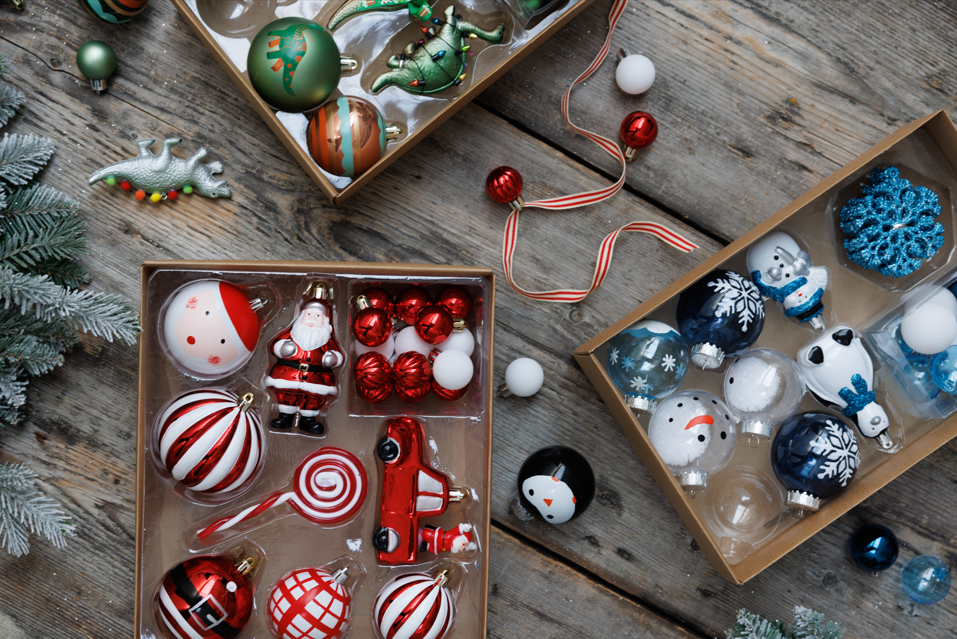
- Christmas
First Christmas in a New Home? 6 Ways to Make Your Home Festive and Cosy
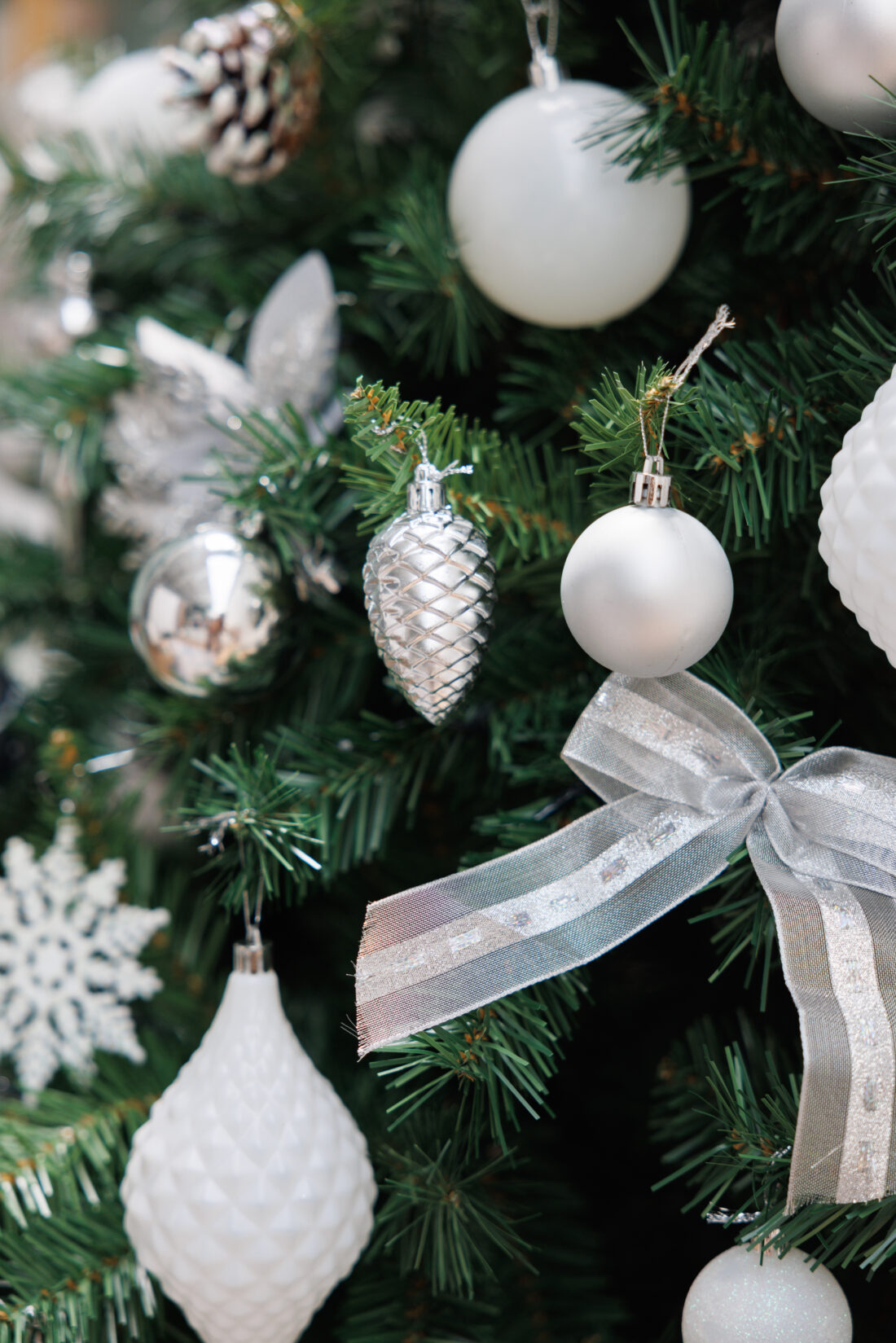
- Christmas
The Ultimate Guide to Decorating Your Christmas Tree
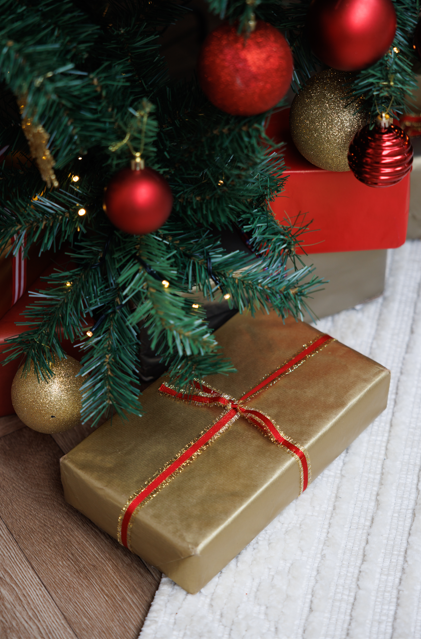
- Christmas